In the search for an effective training, it is worth paying attention to functional strength training program. This type of fitness is carried out not only in the form of group training, but is also used as a training technique in the gym. In addition, you can do functional training even at home. Therefore, pay attention to the benefits, features of this training and use it for your workout routine, regardless of location.
Table of Contents
What is Functional Training
Functional training is a group exercises which are performed with various equipment and own weight. The main goal of functional training is the maximum development of all sports indicators, such as endurance, strength, coordination, balance, and flexibility.
The training program includes exercises for all muscle groups that are performed without a rest. Like any other training, functional training is performed to music at a certain pace, usually 125-135 beats per minute.
Equipment for functional training is diverse: body bars, medical balls, Swiss balls, dumbbells, weight plates, jump ropes, expanders, resistance bands. Improvised equipment and bodyweight can be an excellent alternative to specialized fitness equipment.
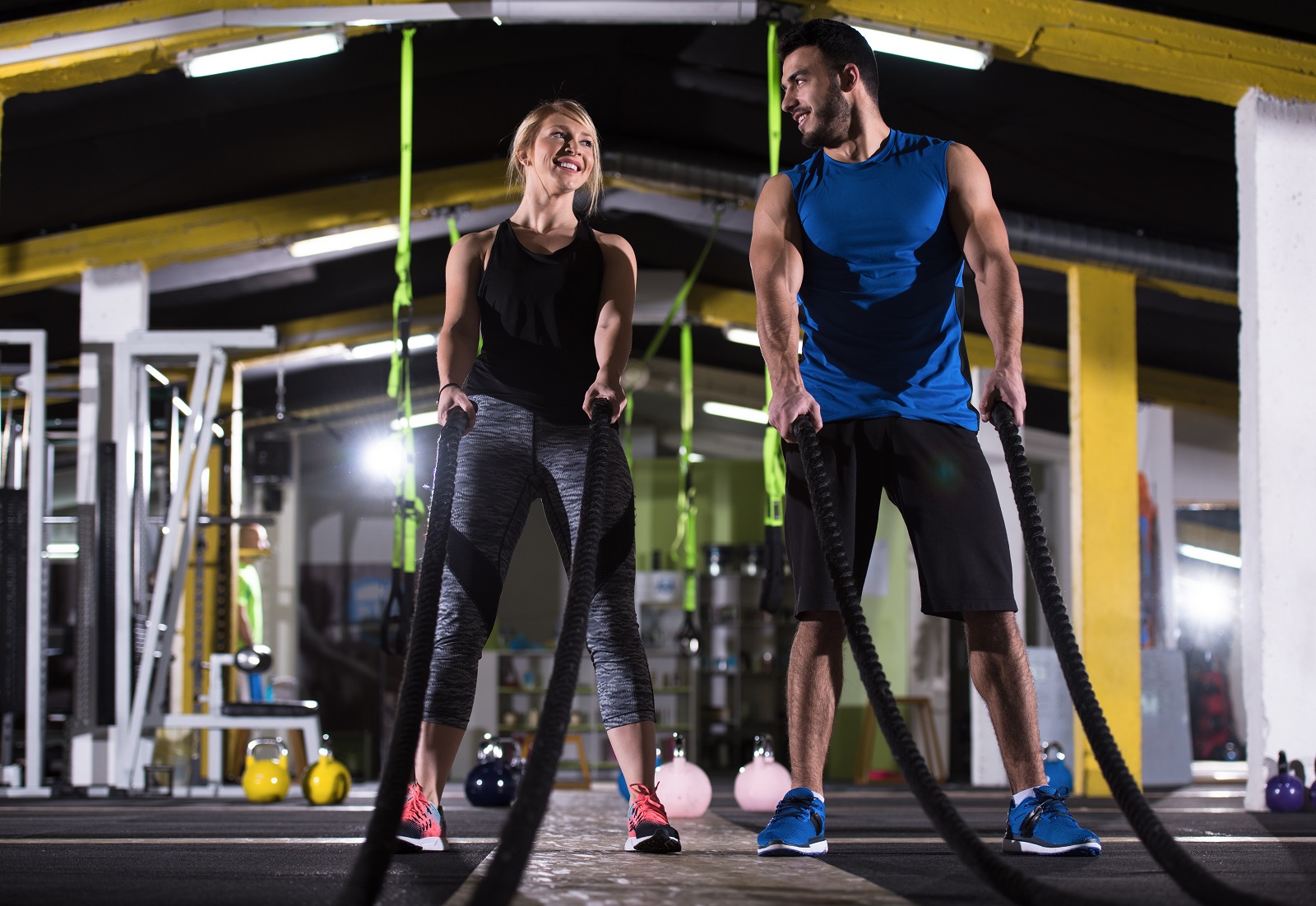
Functional training does not mean that it can be performed only in group training. It is also available in gyms. A good example of functional training is CrossFit.
The workout, in which all muscle groups are worked out, is divided into blocks, continuously repeating one after another. The trainer thinks up the exercises and the program in advance.
Like any other workout, functional training begins with a warm-up. Warming up joints, ligaments and muscles is an integral part of training, and it’s not only about safety, but also about effectiveness. There are functional exercises, such as jumps and strength exercises, which have large amplitudes and speeds of movements. Therefore, warming up and stretching the muscles will contribute to the quality of the technique, and the results.
Typically, in group training, aerobics is used as a warm-up. An active warm-up is performed at the pace of the music, then the main part starts with an explanation of the technique of each exercise.
If the functional training takes place in the gym, the warm-up can be performed on cardiovascular equipment.
Functional Training: Pros and Cons
Pros:
- It allows you to tone muscles, bring the body into sports shape and reduce the amount of fat.
- Helps lose weight with regular exercise.
- Improves endurance, muscle strength, coordination and balance through unstable exercises.
- Strengthens the cardiovascular and respiratory system.
- Increases flexibility and agility.
- Improves mood.
- A variety of exercises and equipment does not allow workouts to become boring.
- Training can be carried out at home with a minimum set of equipment.
Cons:
- An insignificant drawback is that for functional training physical training is necessary, since some exercises, can cause injury to unprepared ligaments and muscles.
- Contraindications and precautions: diseases and instability of the musculoskeletal system, cardiovascular diseases and central nervous system disorders.
- Training is contraindicated during pregnancy and breastfeeding.
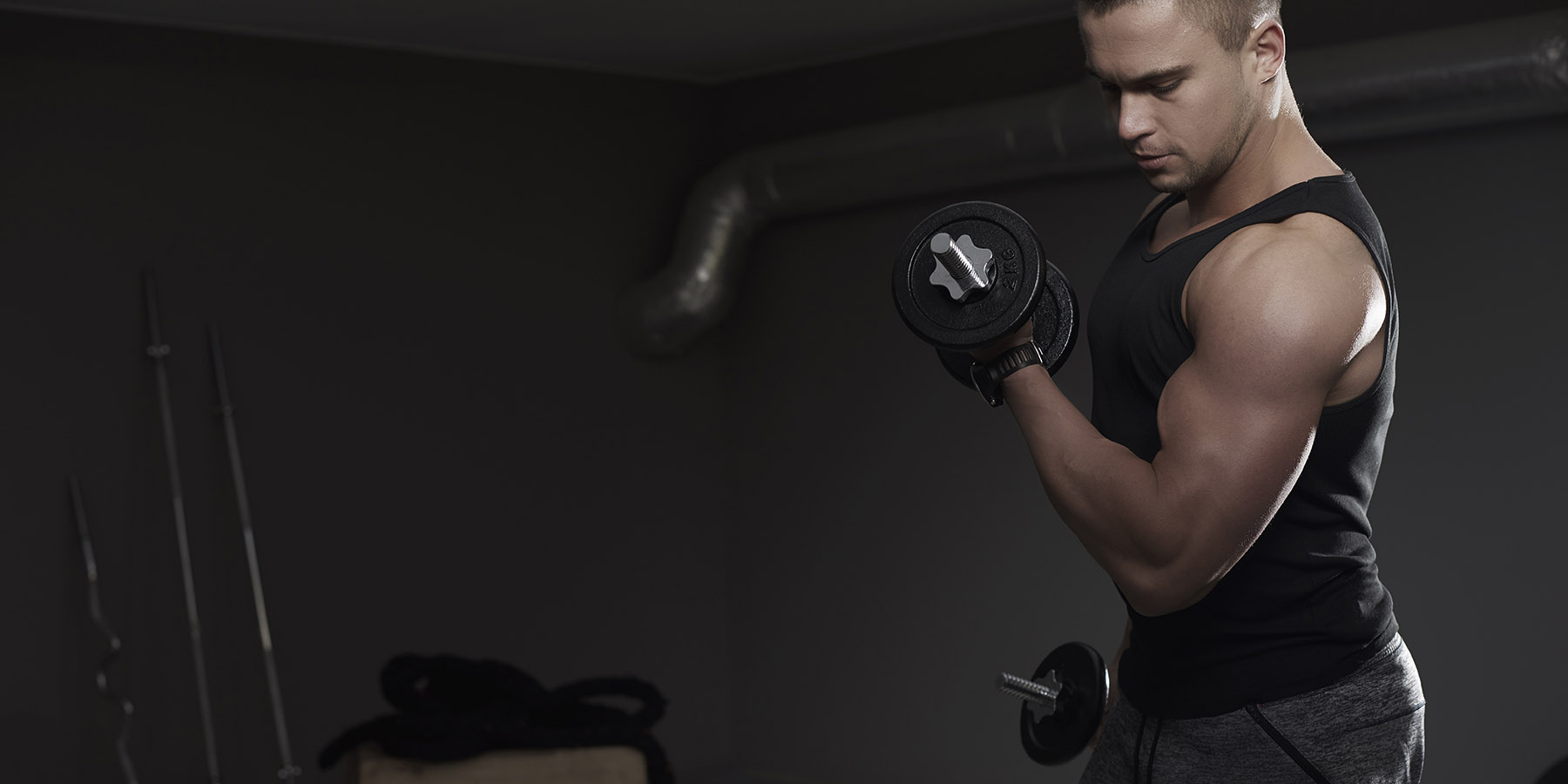
Functional Strength Training Program (Workout Routine)
- Warm up: 5-7 minutes.
- Main training: 40-45 minutes.
As equipment you can take, for example, 2 small dumbbells, which can also be replaced with 0.5-liter water bottles.
Cycle 1
- Squats with arms raised in front of you – 8 reps.
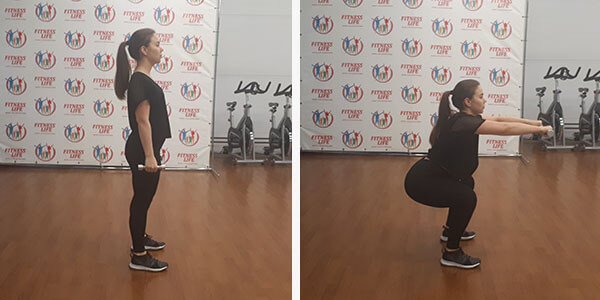
- Overhead dumbbell squats – 8 reps.
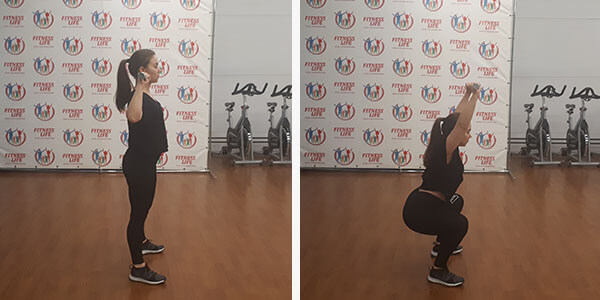
- Lunges – 8 reps on each leg.
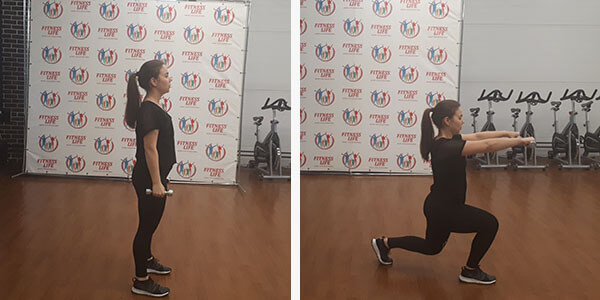
- Reverse lunges – 8 reps on each leg.

- Dumbbell fly – 8-16 reps.
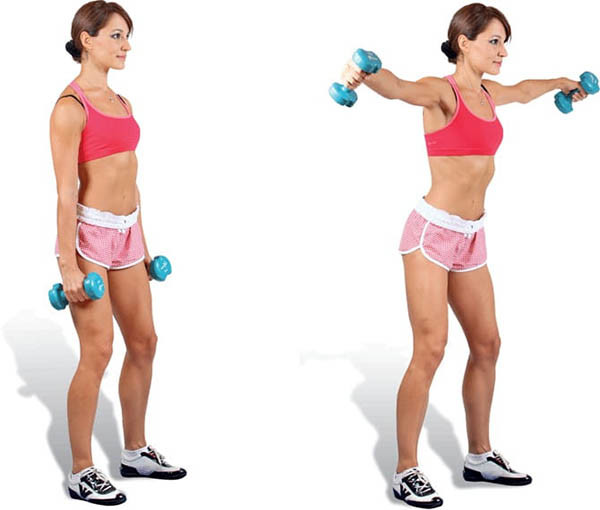
- Bent-over dumbbell fly – 8-16 reps.
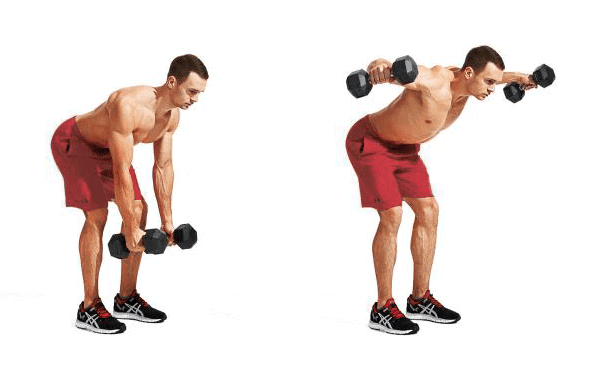
Repeat the first cycle 2 times non-stop.
Cycle 2
- Stiff leg deadlift with dumbbells – 8 reps.

- Stiff leg dumbbell deadlift + 1 deadlift – 8 reps.
- Bent-over dumbbell row – 8-16 reps.

- Stiff leg dumbbell deadlift + bent-over single-arm front raise – 8 reps.
- Front raise – 8-16 reps.
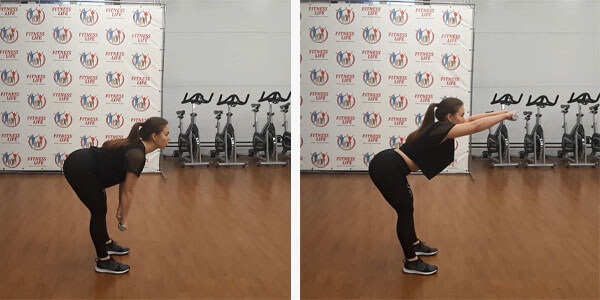
Repeat the cycle 2 times.
Cycle 3
- Wide push-ups – 8 reps.
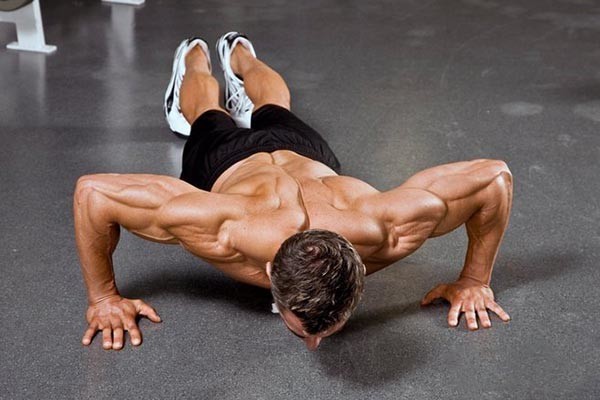
- Close-grip push-ups – 8 reps.

- Plank with side steps – 8-16 reps.
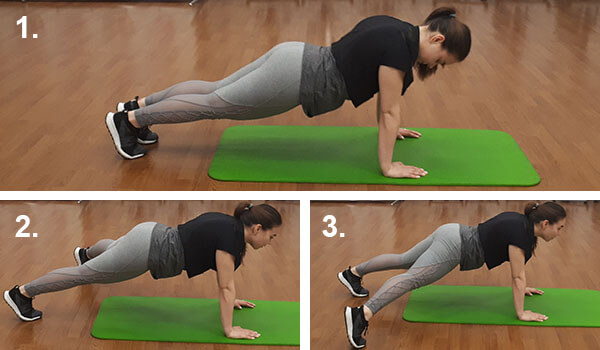
- Triceps extension – 16-24 reps on each arm.

- Dumbbell Curl – 24-32 reps on each arm.
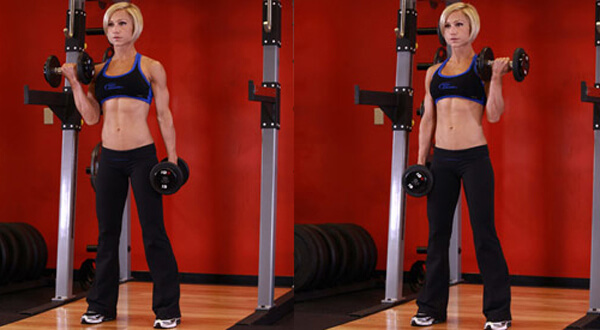
Repeat the cycle 2 times.
Cycle 4
- Leg raise – 8-16 reps on each leg.
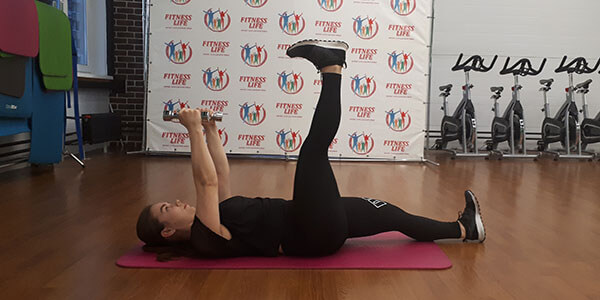
- V-ups – 16-24 reps.
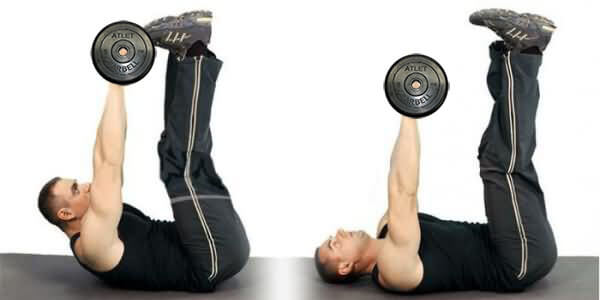
- Side curl – 16-24 reps.

Repeat the cycle 2-3 times, preferably without a rest.
At the end of the workout, it is necessary to do a 5-minute stretch, since all the major muscle groups were worked out in the training.
On average, such a complex takes about 1 hour without a rest.
Functional Training Gym Workout
Warm up: 5-7-minute running.
Main traning:
- Kettlebell Squats – 15 reps.
- Jump rope – 50 reps.

- Stiff-leg deadlift with kettlebell – 15 reps.
- Knee push-ups – 10-15 reps.

- Kettlebell deadlift – 15 reps.
- High jump – 15-20 reps.
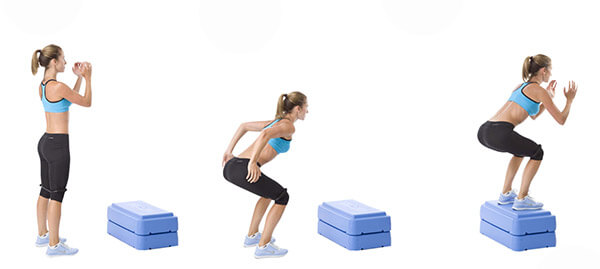
- Kettlebell fly – 15 reps.
- Ab crunch – 20 reps.
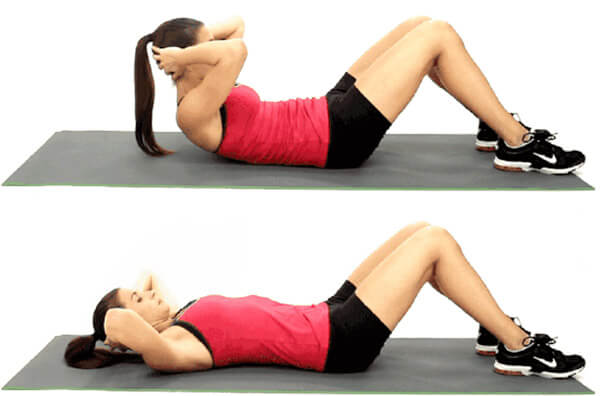
Repeat the training 3-4 times. Rest should not be more than 1 minute.
After training, be sure to stretch all the muscles.
Conclusion
Training can improve athletic shape, reduce body fat, strengthen the heart muscle, and increase overall stamina in a short time. In 1-2 months, the first results will be noticeable. It is advisable to train no more than 3 times a week. The load can be combined with cardio, yoga, Pilates. The main thing is to take into account the recommendations of the trainer and training contraindications.

Hello Dominic, i follow a 5-day full body workout routine .Can i implement this workout as a 6th and still recover properly? I want to work on my functional abilities but I don’t know how to implement them..
Hi! I think that working out for 5 day a week is already huge stress to your body, but if you want to introduce a functional training in your routine, you should have at least a day of rest after. I would also recommend to rest before the workout to have enough strength to implement the workout properly. Good luck!
Hi! I’m new to everyday full body workout. Thank you for the valuable info. Otherwise, I would have stopped from the lack of support in it. But my reason for the comment is to ask if I should stick to the full body workout routine for my bulking phase as well as my current cutting phase?
Hi! U r welcome! Yes, my advice is stick to your routine. You should only change your diet and exercise, add more weightlifting exercises.
Hey, how should I Kang squat with knee pain. I took a nasty fall in our game the other day cause some kid undercut me while I was going up to finish but I feel better now just with a tiny bit of pain but when I kang squat I feel sharp pain on the Inside of my knee. Any tips to help negate knee pain? thx
Hi! You need to go get your knee checked out by a physio or some other medical professional. It’s nearly impossible for someone to make medical diagnoses over the internet.